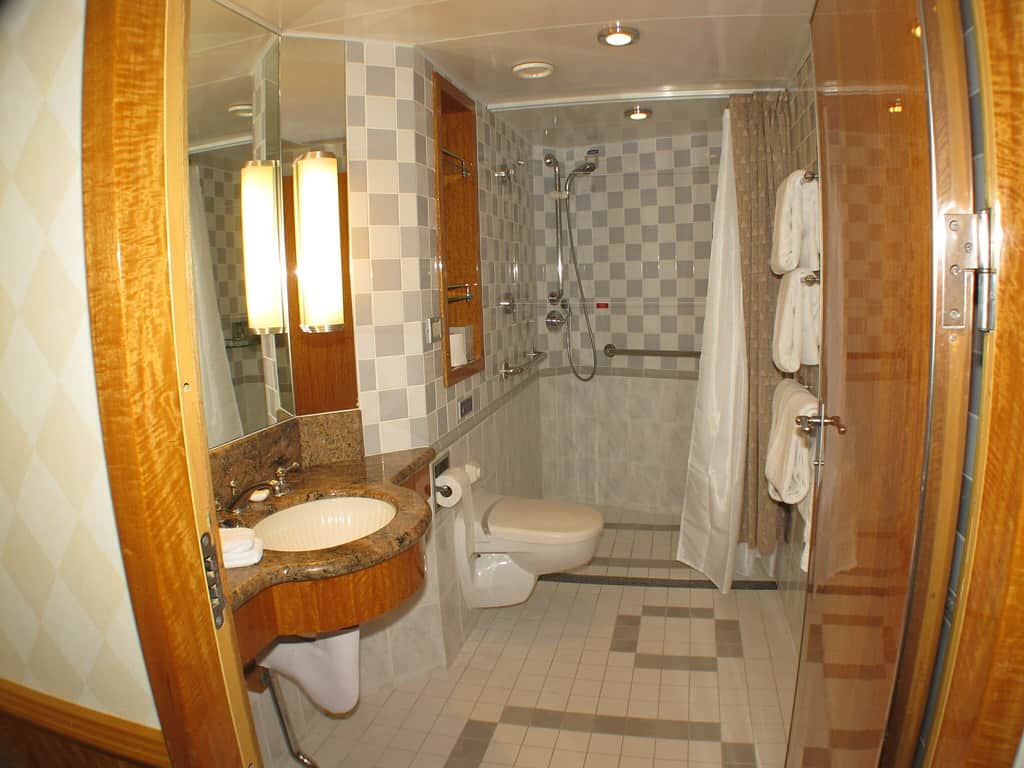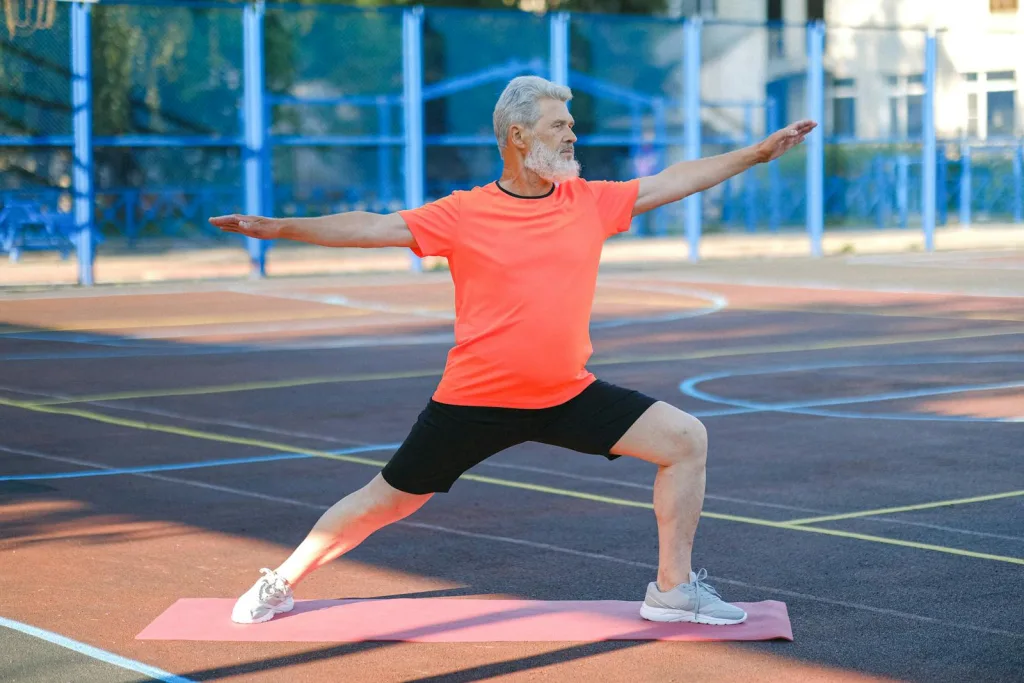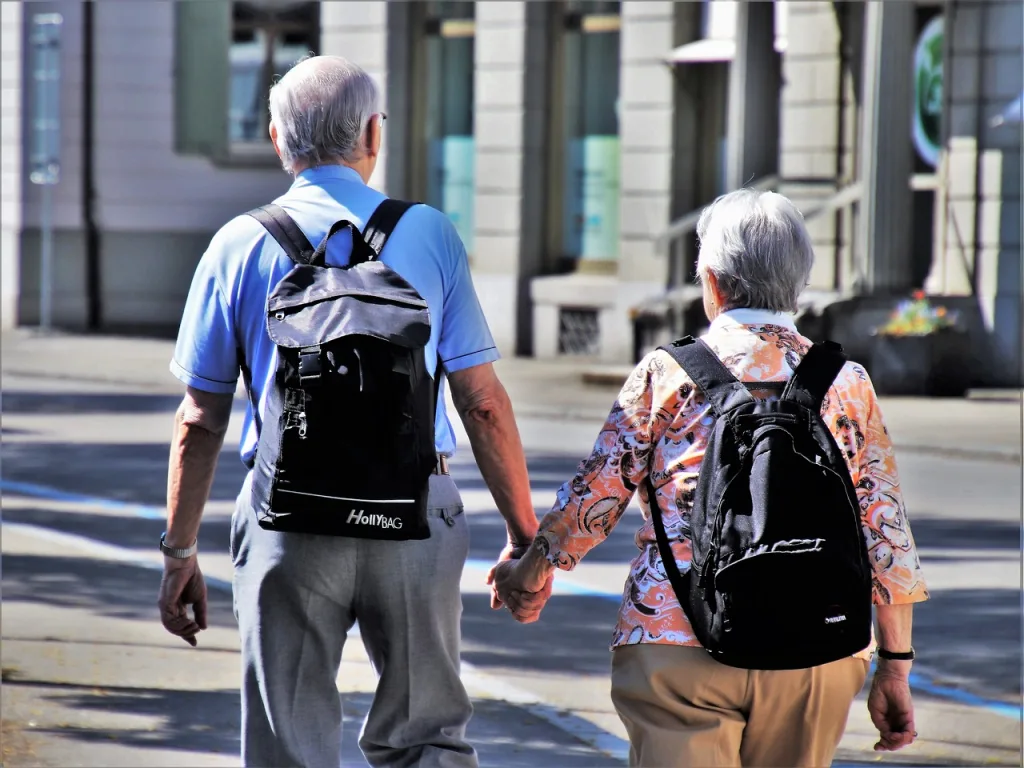As the baby boomer generation steps into retirement, the spotlight turns to tiny homes for seniors—a fresh, practical solution for aging in place.
These compact homes, mother-in-law suites, Casitas, or Granny Pods offer a blend of affordability, simplicity, and safety, perfectly aligning with the needs of modern retirees.
With the average assisted living facility costs exceeding 4,000 dollars a month, “Tiny homes are Becoming a Big Deal”, according to AARP.org.
Approximately 40% of tiny homeowners are above 50 years of age and have joined the tiny house movement.
They provide an alternative housing option that balances affordability and functionality.
Let’s dive into how tiny homes revolutionize senior living, providing a smart, sustainable approach to enjoying the golden years.
Looking for a
Tiny Home Community?
By 2029, baby boomers 65 and older will make up 20% of the U.S. population, up from 14% in 2012.
The baby boomer generation lives longer, and about 1/3 of them are still in the workforce to support themselves. 35% of baby boomers believe they have enough money to live comfortably.
Tiny Homes for Seniors offers customized, accessible designs with features like wider doorways, safety enhancements to support independent living and mobility.
Senior tiny home communities blend privacy and community engagement with age-restricted areas and amenities tailored to active seniors.
Tiny homes can pose challenges for seniors, such as mobility, legal regulations, and social isolation, requiring thoughtful planning and community involvement to ensure a comfortable lifestyle.
Looking for more on
Tiny Home Communities for Seniors?

Disclosure: This post may contain affiliate links, meaning I can earn commissions. If you decide to purchase through my links, it is at no cost to you.
Why We Need Tiny Homes for Seniors

The need for tiny homes for seniors becomes crucial as the U.S. sees a rise in its senior population—from 14% in 2012 to an expected 20% by 2029.
As a real estate agent, I watch people sell their big homes and move into a nursing home or in with family.
Big homes are expensive and are just not manageable any longer.
With about one-third of baby boomers still working and only 35% feeling financially secure, affordable housing solutions like tiny homes are essential. My parents are included in this group. They are transitioning into a tiny home on my sister’s property in the next year.
Erin Hybart
Senior-Friendly Tiny Home Designs
A tiny home will have basics like a kitchen, dining area, sleeping area, bathroom, and living space.
Surprisingly, it is possible to age in place in a space less than 400 square foot.
Tiny Homes Designed for Aging in Place

Tiny home builders offer homes that assist with aging in place through features like:
Wider doorways for mobility devices
Contrasting colors for visual orientation
Elevated appliances can minimize bending
Flooring that doesn’t interfere with medical devices
Pull-out and pull-down shelving
Lever-style door handles
Accessible storage solutions
Motion activated lighting
Lighting for safe mobility in the dark
Light switches placed lower on the wall
Connected technology for easy access if a medical emergency occurs
Integrated cameras for loved ones to check in on their family members
Electrical outlets on dedicated breakers for medical appliances
Pet doors for service animals (this is particularly beneficial for seniors with a psychiatric service dog)
Remote controlled blinds
Two-way intercom systems
Opt for an electric cooktop versus a gas option
- Walk-in Closets with space for wheelchair access
These tiny homes are structures and a testament to thoughtful living, where one can comfortably age in place with dignity.

Single-Level Tiny Homes for Seniors
Single-level living is the backbone of being able to age in place. These homes offer:
Elimination of stairs
1st level bedroom instead of a loft accessible by ladder
Open floor plans for ease of movement
Ramps are added as needed for small step-downs
It will likely be on a permanent concrete slab or piers foundation versus a tiny house on wheels
These features ensure that every corner of your living space is within reach, empowering seniors to lead an active and independent life without the barriers often in traditional homes.

Accessible Bathroom Designs to Age in Place
Bathrooms in senior-oriented tiny homes provide both accessibility and safety. Imagine stepping into a bathroom that includes:
A walk-in tub or a curbless shower
Safety enhancements like built-in benches in showers ensure maximum comfort and independence.
Roll-under sink
Grab bars in the shower and bathroom area
Adjustable-height sinks
Touchless faucets
These features are designed with your comfort in mind and cater to varying needs.

Customizable Floor Plans
Customizing a tiny home with your tiny house builder to fit your lifestyle is possible and encouraged.
Thoughtful planning of the floor plan in the available space will consider future needs.
With customization options anticipating future mobility needs, seniors can opt for features like heated flooring and bed-lift systems for added comfort.
These homes offer the flexibility to add wings or customize other features, allowing for a living space that evolves with you.

Aging in Place in a Tiny House Near Family
Imagine waking up each morning in the coziness of your small home, just steps away from your family’s front door.
You gently savor your morning coffee on the porch, feeling grateful for the peace and serenity that envelop you.


You are a living example that growing old in familiar surroundings doesn’t have to mean feeling alone.
On the contrary, being close to your dear ones has added a warm glow to your senior years.
the Gift of Privacy, Independence, and Connectedness
Your tiny dwelling provides all the conveniences you require minus the complexities and costs of a traditional house.
Though modest in size, the moments you’re cherishing in this snug space are truly invaluable.
You get to enjoy privacy yet have independence in your own space.

Experience Comfort and Security As You Age
What we may have been comfortable with in our youth may no longer suffice.
That’s why finding ways to experience comfort and security as we continue in life is important.
Whether investing in a comfortable bed or adjusting to our homes to ensure safety, taking care of ourselves as we age should be a top priority.

Tiny Home Communities Catering to Seniors
Tiny home communities catering to seniors offer a unique and innovative living solution for the older generation seeking simplicity, community, and comfort.
These communities are designed with the needs of seniors in mind, providing compact, accessible homes that eliminate the hassle of traditional homeownership.

In these neighborhoods, seniors can enjoy the benefits of downsized living without sacrificing quality or independence.
From maintenance services to internet access and nature trails, these communities are designed to foster connections and provide a supportive environment tailored to the needs of active seniors.
📖 Further Reading: How to Downsize into a Tiny House – The Easy Way
Age-Restricted Communities
Age-restricted communities are often referred to as 55+ communities.
They are residential neighborhoods designed for adults above a certain age, typically 55 or older.
You won’t find a lot of kids running around here.

These communities cater to the lifestyle, interests, and needs of older adults, offering a variety of amenities, social activities, and maintenance services to ensure a comfortable and engaging living environment.
These communities can help develop a strong bond among residents for support and friendships.
Senior-Friendly Amenities
Tiny home communities don’t skimp on senior-friendly amenities.
Seniors can indulge in activities like tennis, gardening, pickleball, and fishing, ensuring an active lifestyle that complements the simplicity of tiny home living in a tiny home community.
With access to natural settings and communal spaces for fitness and relaxation, these communities are perfectly equipped for seniors seeking to make the most of their retirement years.

Adapting to Tiny Home Living in Retirement
Switching to tiny home living in retirement is a significant move towards a gratifying lifestyle.
It’s a chance for seniors to handpick features that resonate with their tastes and practical needs.
Embracing this change means preparing emotionally, maintaining social connections, and ensuring your home has safety features that support your well-being and independence.

Downsizing Possessions
Downsizing possessions can provide a sense of liberation for seniors moving into tiny houses. It can also be tough too.
By embracing minimalism challenges and the KonMari Method, tiny homeowners can identify the items that truly bring joy and organize their space for a clutter-free environment.
Utilizing off-site storage temporarily can ease decision-making, ensuring each cherished possession has its rightful place in its new home with extra storage space.

Embracing Minimalism
Minimalism in tiny homes encourages the prioritization of quality over quantity.
For seniors, this means adopting a capsule wardrobe and making conscious purchasing decisions that align with their space-saving goals.
By doing so, they create a functional and free living environment, allowing them to focus on the joys of life rather than the burden of possessions.

Benefits of Tiny Home Living for Seniors
Tiny home living presents many benefits for seniors, including:
Financial freedom
A simplified lifestyle
The chance to adopt eco-friendly habits
With most tiny homeowners mortgage-free, seniors can enjoy a life less encumbered by financial worries, granting them the liberty to travel and pursue passions that may have been out of reach.

A tiny home on the property of a loved one means you have support when needed and can visit with family often.
Staying connected to family is part of a healthy mind and spirit.
Financial Savings
Living in a tiny home can result in significant financial savings, allowing you to save money.

Who doesn’t want to save money?
Constructing a tiny home requires a fraction of the cost of a traditional house, with dramatically lower utility bills and the added benefit of less debt.
$60,000 for a tiny house versus over $400,000 for a traditional home.
These savings open up new possibilities for seniors.
Less debt can mean enjoying the fruits of your hard work for many decades.
Time Freedom
Tiny homes inherently require less time and effort to maintain.
Gone are the days spent on endless chores and home repairs.

This reduction in maintenance frees up hours each week, allowing retirees to invest time in hobbies, travel, social activities, or simply relaxing.
Simplified Maintenance
A smaller living space in tiny homes simplifies maintenance tasks, providing more space for seniors to enjoy their time.
The smaller space means less to clean and fewer appliances to maintain, allowing seniors to focus on leisure rather than spending it on upkeep.

The high quality of construction in prefab tiny homes further ensures longevity with minimal need for repairs, simplifying buyers’ maintenance routine even further.
Challenges and Considerations for Senior Tiny Home Living
While tiny home living offers numerous advantages, seniors must consider its unique challenges.
From ensuring the home is accessible and meets their mobility needs to maintaining privacy and finding suitable multifunctional furniture.
Seniors must thoughtfully navigate these aspects for a comfortable living experience.
Mobility and Accessibility
When designing tiny homes for seniors, accessibility is a major consideration.
With considerations for wider hallways, enhanced bathroom safety features, and contrasting textures, these homes are crafted to provide seniors with a secure and comfortable environment.
Such design choices not only support their mobility but also respect their independence.

Legal Restrictions
Understanding the legal aspects is crucial for tiny home living.
Zoning regulations, building codes, and local ordinances can significantly impact where and how a tiny home can be placed.
Seniors must be aware of these restrictions and potentially work with authorities to find solutions that allow them to enjoy their tiny home lifestyle.
Social Isolation
Seniors living in tiny homes may face the risk of social isolation. Social isolation will not help you live longer. People crave connection.

By engaging in community activities, staying active, and utilizing technology, seniors can stay connected with others and maintain a vibrant social life.
Access to transportation and regular communication with loved ones is crucial in staving off loneliness and ensuring that a loved one has a fulfilling retirement.
Assisted Living Alternatives: Tiny Homes vs. Traditional Facilities
Choosing between tiny homes and traditional assisted living facilities is a significant decision for seniors and their families.
Tiny homes offer a more personalized and intimate care environment.
This can be particularly appealing in light of the challenges faced by conventional assisted living facilities.
Pros and Cons of Tiny Home Care
Tiny home care combines the comforts of home with personalized attention, enhanced by the added benefit of safety and convenience through smart technology.
While there are many advantages, including greater autonomy and individualized care, challenges such as limited amenities and growing pains must also be considered.
Cost Comparison
A cost comparison between assisted living facilities and building and maintaining a tiny home reveals the financial advantages of tiny home living.
The average cost of a tiny home is about $52,000 – $60,000.

With assisted living averaging around $4,000 per month and up, the upfront cost of a tiny home can be recouped in just a few years.
This means you could have a more affordable long-term solution.
You can easily see how the numbers compare even with the cost of utilities and ongoing maintenance of a tiny house.
Customizing Care
In a tiny home, customizing care is crucial for the safety and well-being of seniors. By integrating features like emergency call buttons in bathrooms, tiny homes can provide peace of mind for all.
For seniors living independently, safety extends beyond the home itself. Wearable technology such as Tranquil’s GPS tracker for elderly loved ones offers an additional layer of security, allowing family members to monitor location and receive alerts in case of wandering or emergencies.
That peace of mind is priceless for residents and their families, offering personalized care responsive to individual needs.
Final Thoughts
Retiring and getting older can be beautiful. It should be.
A tiny house can be part of creating beautiful golden years.
From the thoughtful design that ensures comfort and accessibility to the vibrant communities that foster social connections, tiny homes present a compelling alternative to traditional retirement living.
Embracing this lifestyle means financial savings, simpler maintenance, and the flexibility to adapt and thrive in one’s golden years.
While there are challenges to consider, such as mobility concerns and legal restrictions, the overall potential of tiny home living for seniors is undeniably promising.
With careful planning and a spirit of adaptability, retirees can craft a fulfilling, independent, and joyous chapter of life within the cozy confines of a tiny home for seniors.
Frequently Asked Questions
Are tiny homes good for retirement?
Yes, tiny homes are ideal for retirement because they save money on utility costs, support various lifestyles, and are ideal for new retirees.
Can tiny homes accommodate seniors with mobility devices?
Tiny homes can be customized with wider doorways, lever-style door handles, and single-level designs to easily accommodate seniors with mobility devices. This allows for a more accessible and comfortable living space.
Is Living Off the Grid in a Tiny Home, a Good Idea for Seniors?
Living off the grid in a tiny home can be attractive for seniors who desire independence, a closer connection to nature, and a sustainable lifestyle. This approach to retirement living emphasizes self-sufficiency.
Are Tiny House Communities Good for the Growing Need for Elderly Housing?
As the population ages, the demand for affordable, accessible, and community-oriented living spaces increases. These communities are designed to meet the needs of seniors, through shared spaces and activities.
Image Source: Canva, Pexels, Pixabay, Open Verse, Unsplash

